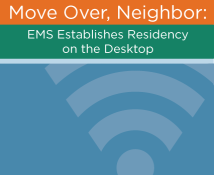Unlike buy-side firms’ order management systems (OMSs) which had been long-term tenants on their desktops, execution management systems (or EMSs) were transients, with institutional traders commonly switching platforms as bells and whistles on new systems continually trumped older models. But as single-broker systems gave way to multi- broker platforms, loyalty to EMSs today more closely resembles that of their OMS companions.
What remains different, however, is that while the OMS has to service many factions of an institutional firm, the EMS is built for one purpose: trading. And as equity trading becomes more complex, EMS providers have been challenged to continue to deliver comprehensive solutions.
According to the latest Greenwich Associates research, over 70% of buy-side equity traders use third-party EMSs. Brokers often label this breed of trader as “active.”
Active traders require additional trading functionality not found on OMSs, such as configurable trading blotters, real-time depth of market data, charting, and alerts. OMSs certainly provide the baseline capabilities to route orders via brokers’ algorithms but lack the additional controls and color that give those active equities traders an edge.
Given the number of trading venues and the desire for greater controls around order handling, it makes sense that the majority of buy-side traders today would access the markets via an EMS.
MethodologyBetween August and September 2015, Greenwich Associates interviewed 258 buy-side traders across the globe working on equity, fixed-income or foreign exchange trading desks to learn about trading desk budget allocations, trader staffing levels, OMS/EMS/TCA platform usage, and ATS satisfaction levels.

